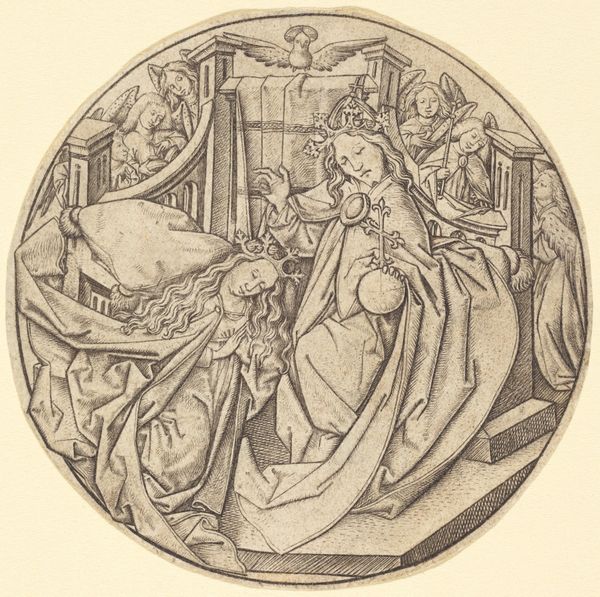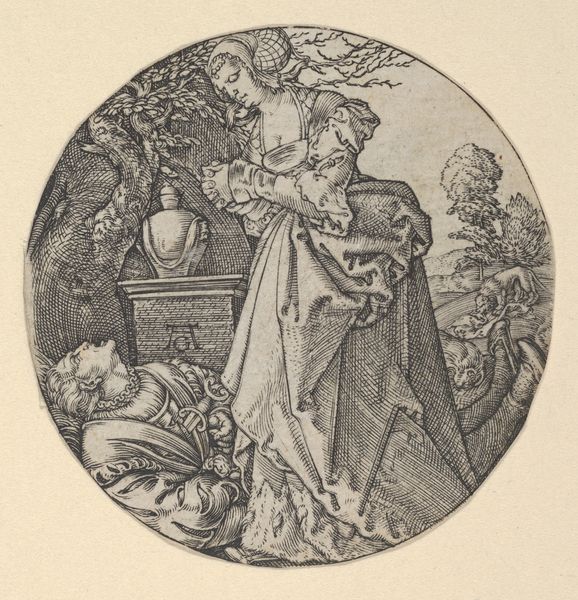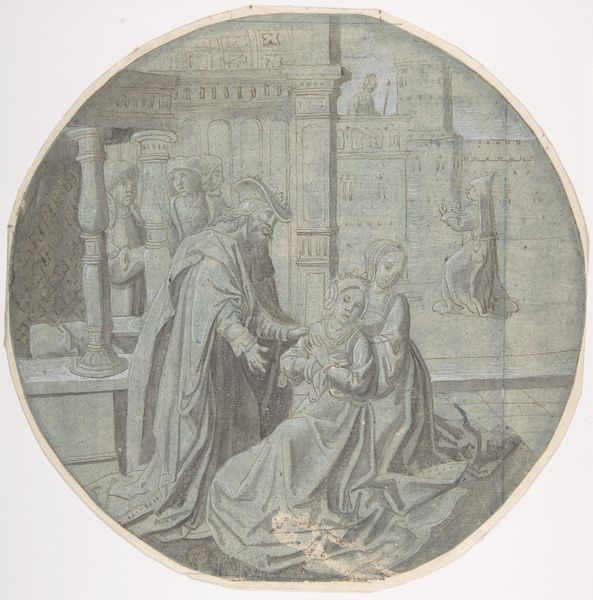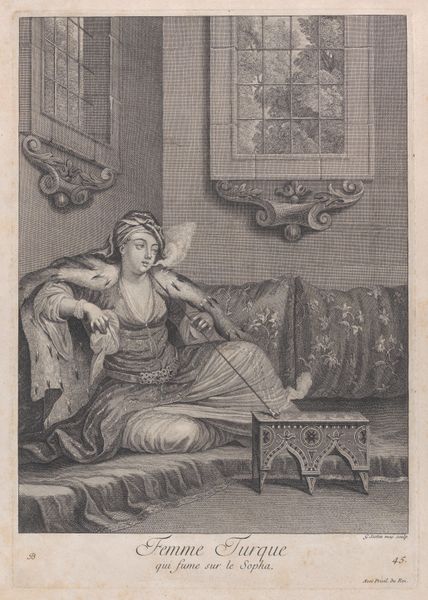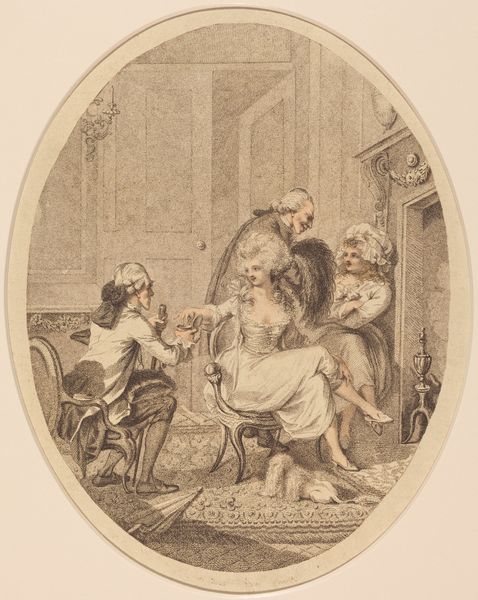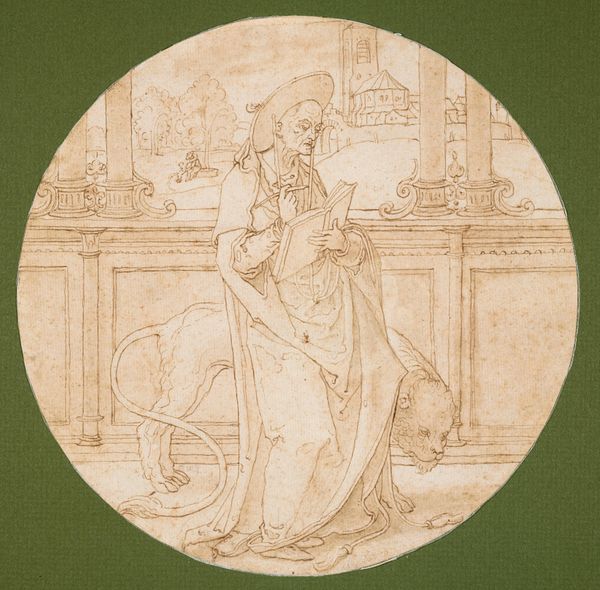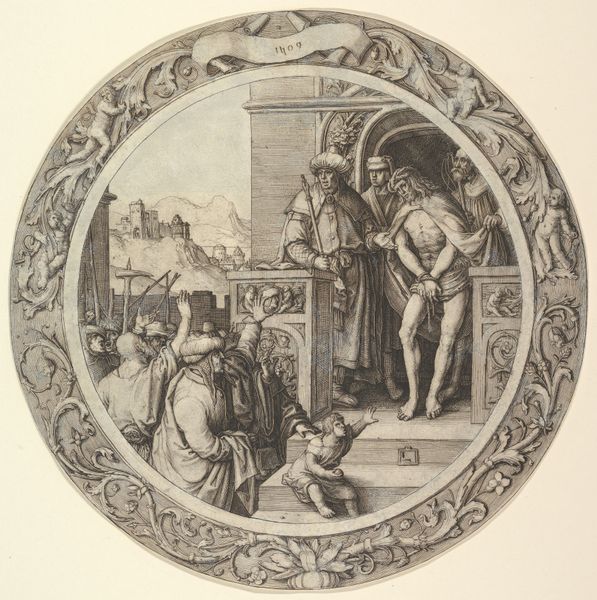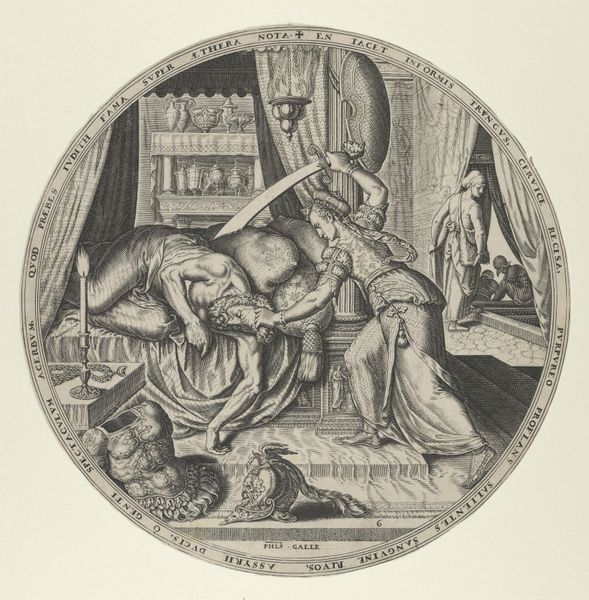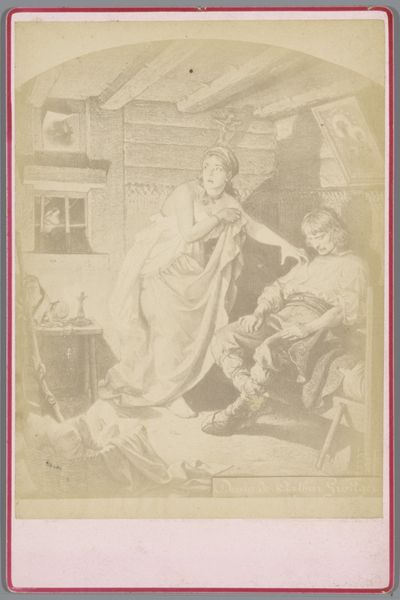
drawing, print, ink
#
drawing
#
ink drawing
#
allegory
# print
#
figuration
#
ink
#
history-painting
#
italian-renaissance
#
nude
Dimensions: Diameter 7 3/8 in (18.6 cm)
Copyright: Public Domain
Curator: Well, isn't this an intriguing roundel! Created sometime between 1510 and 1550, this piece, attributed to Georg Pencz, depicts the biblical story of Joseph and Potiphar's wife. It’s rendered in ink on, likely, laid paper, creating a print or drawing intended for wider circulation. Editor: The immediacy is striking. My eye is drawn to the dramatic gesture of Potiphar's wife and the stark contrast between her partially draped figure and Joseph's hasty departure. It conveys a potent moment of accusation and escape. Curator: Exactly! Pencz uses the visual language of the Italian Renaissance, particularly its obsession with classical antiquity and idealised forms, to stage this biblical drama. Note how the architecture in the background adds a layer of classical dignity to the scene. Editor: The symbol of the fleeing Joseph… he's a fascinating representation of resistance to temptation. His closed fist is quite unusual, which contrasts heavily with the wife's pose. But consider, isn't it curious how frequently the 'temptress' figure recurs, often vilified, across cultures? Does it serve to displace male desire onto the female form? Curator: Indeed. And you touch upon a key point – how this imagery functions within the patriarchal structures of the time. This depiction also touches upon power, desire and accusation within the social contexts of 16th century Europe, where artists grappled with both classical ideals and religious narratives. The act of circulating this print then serves a moralising function, embedding certain ideas about virtue, gender and power into the wider populace. Editor: You’re right; the act of distribution itself becomes part of the artwork's message and its cultural influence. The architecture visible through the window and door must have had symbolism relevant to the time, as well. Curator: This adds a depth, encouraging us to look at how narratives like this participate in a bigger conversation within art and wider society, influencing perceptions and societal values, just as it has done since. Editor: The exploration of these classical themes adds so much depth to understanding social constructs related to morality that are timeless, as represented by art.
Comments
No comments
Be the first to comment and join the conversation on the ultimate creative platform.

